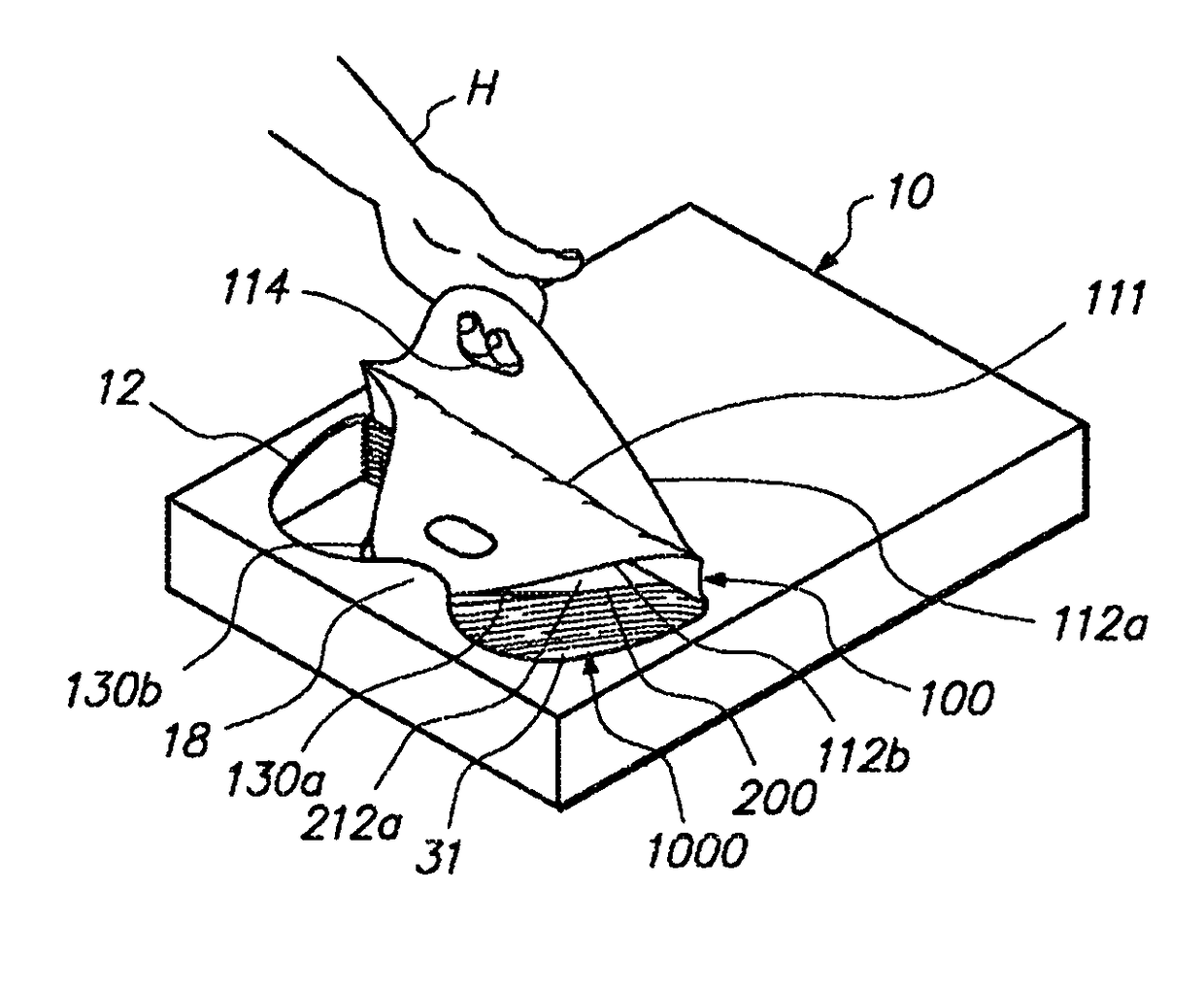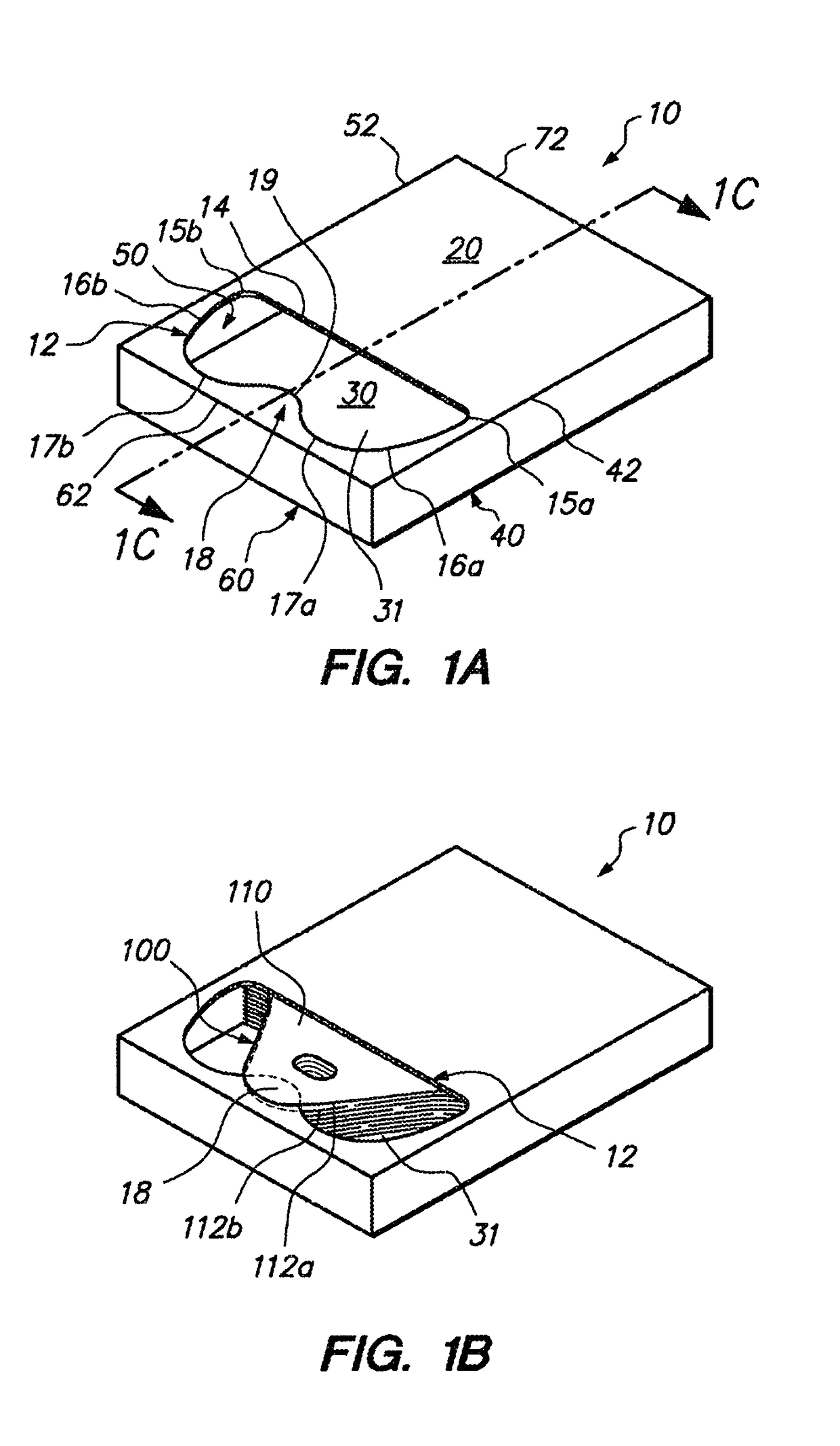Article dispenser and methods relating to same
a technology of dispensers and articles, applied in the field of plastic film articles, can solve the problems of reducing the professional appearance, and reducing the attractiveness of the object, so as to improve the environmental properties and reduce the cost
- Summary
- Abstract
- Description
- Claims
- Application Information
AI Technical Summary
Benefits of technology
Problems solved by technology
Method used
Image
Examples
Embodiment Construction
[0046]For ease of explanation, only the disposable carton version of the present invention will be described in detail. Any person who is experienced in the art will easily understand how the permanent dispenser version of the present invention would thereby be constructed.
A. Description of an Exemplary Carton
[0047]Referring now to FIG. 1A, in accordance with the principles of the present invention, a first embodiment of a dispenser in the form of an empty carton or container body, generally designated 10, is illustrated. The carton body is constructed with a top panel 20, an opposing bottom panel 30, a pair of opposing side panels 40 and 50, front end panel 60, and a rear end panel 70 (FIG. 1C), which opposes front panel 60. In this exemplary embodiment, within the confines of the top panel 20 is a perforated dispensing cut-out 12 defined by rear line 14 extending across top panel 20 from a point 15a recessed from side edge 42 to a point 15b recessed from side edge 52, two spaced a...
PUM
 Login to View More
Login to View More Abstract
Description
Claims
Application Information
 Login to View More
Login to View More - R&D
- Intellectual Property
- Life Sciences
- Materials
- Tech Scout
- Unparalleled Data Quality
- Higher Quality Content
- 60% Fewer Hallucinations
Browse by: Latest US Patents, China's latest patents, Technical Efficacy Thesaurus, Application Domain, Technology Topic, Popular Technical Reports.
© 2025 PatSnap. All rights reserved.Legal|Privacy policy|Modern Slavery Act Transparency Statement|Sitemap|About US| Contact US: help@patsnap.com



